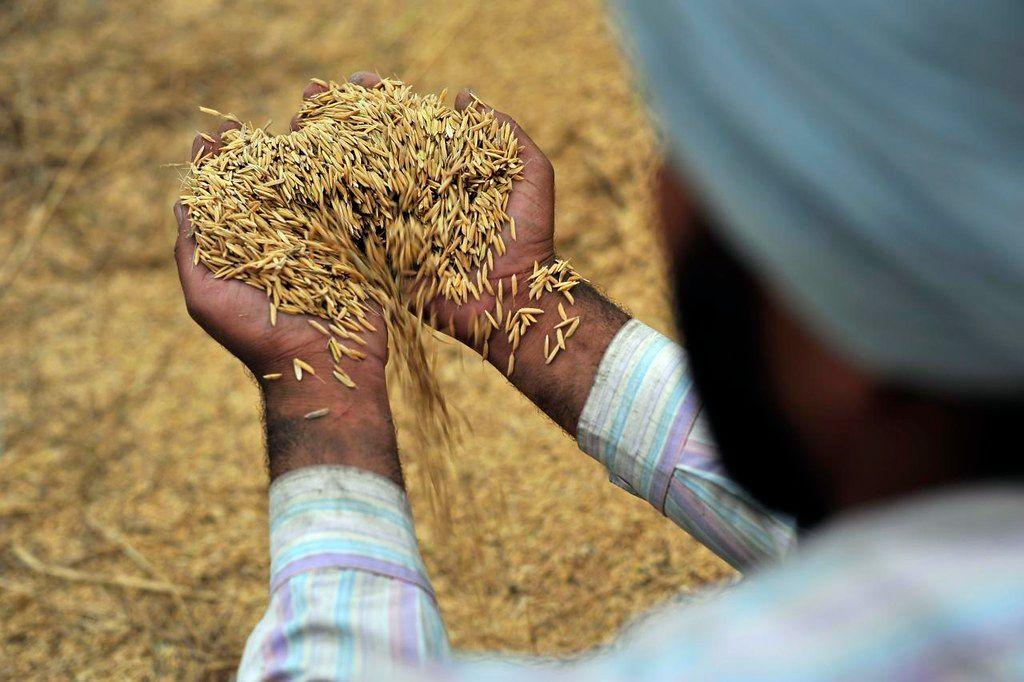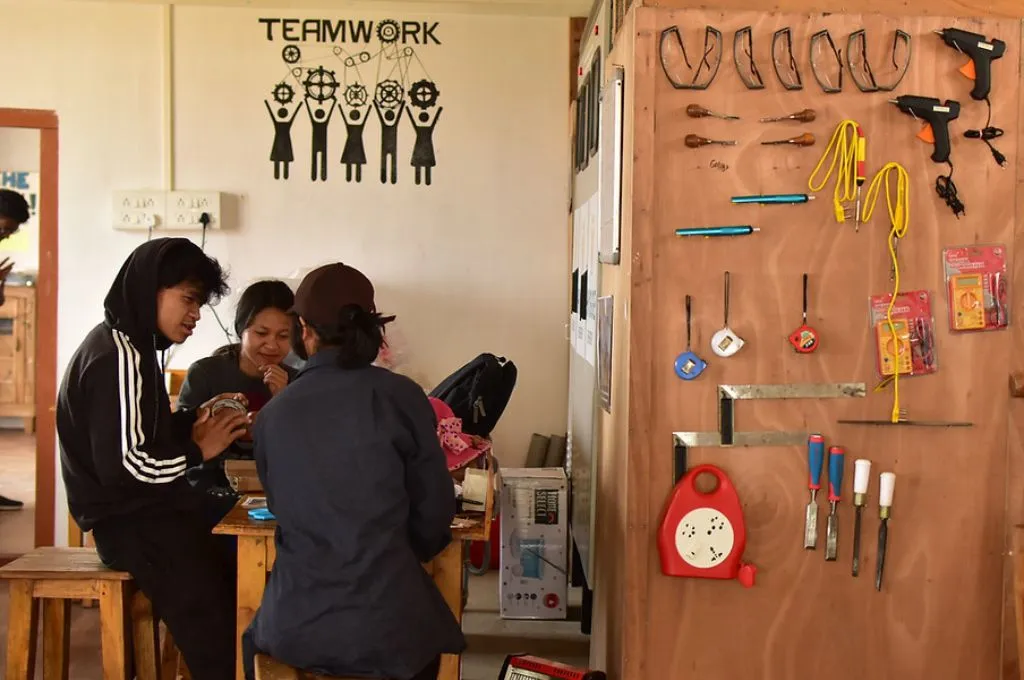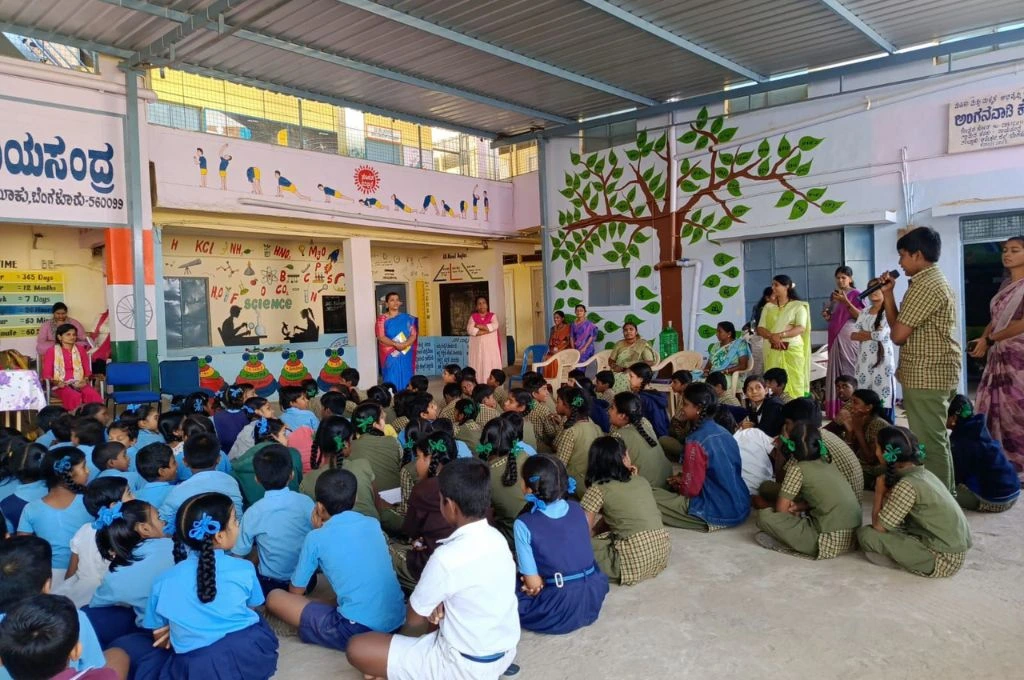The Centre has allocated about 5.2% of its total budget for 2022-23 to the country’s food subsidy programme. A crucial safety net, the food subsidy is used to protect farmers against low market prices and provide consumers with affordable food grains through the public distribution system (PDS).
However, the food subsidy has been criticised for its inadequate coverage and leakages, and there is a need to improve the programme, experts told IndiaSpend. Our explainer examines the various ways in which food subsidies have fallen short and what can be done to make it more useful for its beneficiaries.
How food subsidy works
The food subsidy is both a consumer and a producer subsidy. It is used to buy grains from farmers at a price that makes farming remunerative and then sell the grain to poor households at lower prices, or in some cases, for free. Some part of the subsidy is also spent on maintenance and other administrative costs.

Under centralised procurement, the Food Corporation of India buys rice and wheat from the farmers at a minimum support price (MSP).
Both the Centre and the state buy food grains for distribution under the PDS. The Centre buys it through the Food Corporation of India (FCI) under “centralised procurement” and numerous state agencies buy it for the respective states as part of “decentralised procurement”.
Under centralised procurement, the Food Corporation of India buys rice and wheat from the farmers at a Minimum Support Price (MSP) and sells it at the Central Issue Prices (CIP) (a lower price that is determined by the government and must be lower than the MSP) through PDS shops. Some of this grain is also used for welfare schemes (like the Mid Day Meal programme and Scheme for Adolescent Girls), to provide food grains to the armed forces and also sold in the market in lean seasons. The FCI provides rice to the Akshaya Patra Foundation, a charitable organisation that provides Mid Day Meals in schools in some states.
Since the CIP is less than the MSP, the difference is covered by the food subsidy, which is transferred to the FCI each year.
A statutory body created by the Food Corporation of India Act of 1964, the FCI was established for the “purchase, storage, movement, transport, distribution and sale of foodgrains and other foodstuffs”. Besides getting money from the government directly, it has in the past also raised money by borrowing from the National Small Savings Fund (NSSF), from banks and by issuing bonds.
Before the enactment of the National Food Security Act (NFSA) in 2013, the PDS was an administrative scheme, according to N.C. Saxena, a former member of the Planning Commission. “The NFSA gave the beneficiaries legal rights and increased the number of beneficiaries to 67% [of the population] from the older 25-30%. It also distributed more foodgrains now than it did before, from 17 million tonnes in 1997 to 60-90 million tonnes in 2020.”

The PDS is one of the biggest welfare programmes in the country in terms of expenditure: Food subsidies account for 5.2% of the total expenditure, as we said above. It is among the top five expenses of the government (excluding interest payments) after defence, transport, transfers to states and pensions. It is meant to cover 903 million people (67% of the projected population for 2020).

Budget allocations
For 2022-23, the Centre has allocated Rs 2.06 lakh crore for food subsidy. This is 97% of the budget for the Department of Food and Public Distribution, which is in charge of the PDS. This was a 28% decrease from the estimated expenses for the current financial year (Rs 2.9 lakh crore), which was in turn 47% lower than the amount spent in 2020-21 (Rs 5.41 lakh crore).
This decline is because the government paid the loans that the Food Corporation of India took from the National Small Savings Fund in 2016.
With no income of its own, the FCI depends entirely on the food subsidy. Financial reports on its website show that it has borrowed from banks (through cash credit limits and short-term loans), by issuing bonds and from the NSSF. Since this loan did not reflect on the government’s balance sheet, it allowed them to keep the fiscal deficit in check.
As of January 31, the FCI owed Rs 47,649 crore, the majority of which (Rs 45,000) is owed to bond owners.
The FCI owed the National Small Savings Fund Rs 2.54 lakh crore in 2019-20, which it borrowed on behalf of the Government of India to make up for the shortfall in food subsidy. These loans were cleared in the fiscal year 2020-21, which explains the massive increase in the food subsidy bill that year, according to Siraj Hussain, visiting senior fellow at the Indian Council for Research on International Economics and former chairman and managing director of the Food Corporation of India. “This [repayment of loans] allowed the FCI to save on interest, which has brought down the economic cost of the foodgrains,” Hussain explained.
The food subsidy is now nearly twice what it was in 2019-20, the last year in which the FCI borrowed “off-budget” for the government.
The NFSA requires the FCI to maintain a buffer stock of 21.41 million tonnes of food grains. The surplus stock requires the FCI to spend on storage. At present, the FCI has about 55 million tonnes of rice and wheat, 49 million tonnes of unmilled paddy and 2.8 tonnes of coarse grains, as per the latest stock report. Further, the FCI spent Rs 9,102 crore on storage (1.7% of the food subsidy) in 2020-21.
Insufficient coverage under PDS
Antodaya Anna Yojana (AAY) households (the poorest from among the households that live below the poverty line in a state) are entitled to 35 kg of foodgrain per month, while priority households (identified by the state governments from the poorest that are not included in the AAY list) are entitled to 5 kg of food grain per person per month. The grains are sold to them at a subsidised price of Rs 2 per kg for wheat and Rs 3 per kg for rice.
The national coverage rate was fixed at 67% by the NFSA, which was split into 75% for rural and 50% for urban based on the 2011 census. Earlier, the Planning Commission would decide on state-wise priority households who would receive the food subsidy, based on poverty estimates from the Consumption Expenditure Survey, said Hussain. But, in 2017-18, the survey was scrapped, and now “the NITI Aayog will have to make a decision on the expansion of coverage under NFSA”.
In contravention of the NFSA, only 59% of the intended beneficiaries are covered by the PDS at present.
In addition to population, the amount of foodgrains available for procurement was used to determine the coverage under NFSA, according to Jean Drèze, an economist and visiting professor at the University of Ranchi, who was part of the discussions around the NFSA. “At that time, the central government took the view that annual foodgrain procurement should not exceed 60 million tonnes. So that became an effective benchmark for the National Food Security Act.”
However, the FCI can buy more than 60 million tonnes, and the amounts procured have increased in the last 10 years (see chart below). This year it is set to buy 43 million tonnes of rice and an equivalent amount of wheat. However, distribution cannot go beyond 60 million tonnes because of the NFSA, leading to surpluses.
Further, in contravention of the NFSA, only 59% of the intended beneficiaries are covered by the PDS at present, as per the government’s own data, as per this 2020 paper. Use of the 2011 census for determining the number of ration cards to be issued has resulted in 100 million people being excluded from the PDS, as IndiaSpend reported in 2020.
There was an increase in distribution of foodgrains in the pandemic years due to the addition of the Pradhan Mantri Gareeb Kalyan Yojana, a relief package that included, among other things, 5 kg of additional rice or wheat and 1 kg of pulses for free every month. About 94 million tonnes were distributed in 2020-21 and 80 million tonnes in 2021-22. The scheme has not been extended after November 2021.
IndiaSpend reached out to the Ministry of Consumer Affairs and Food and Public Distribution for comment on increasing the coverage and entitlement under the NFSA. This story will be updated when we receive a response.
Include more grains, universalise PDS in rural areas: experts
Numerous studies highlight the importance of the PDS in providing a measure of food security to the poor in India. A six-state survey supported by the Department of Food and Public Distribution in 2014 found that more than 90% of BPL and AAY families used their PDS cards to buy grains. Access to PDS grains enabled families to consume rice and sugar in Andhra Pradesh, according to this study, which did not find links between nutrition and PDS. Undernutrition among children was highest in the households excluded from the PDS, according to this 2020 study.
The PDS has been criticised for the “leakages” (about 47% of the total grain), which has increased since 2004. In a move to eliminate inefficiencies and pilferage, the government linked ration cards to Aadhaar. The benefits of the move are unclear, as IndiaSpend reported in 2018. Aadhaar authentication errors leading to denial of rations under PDS may have led to seven of fourteen deaths in 2018, as we reported in August 2018.
In its present form, the PDS subsidises only cereals, since the FCI only procures rice and wheat.
“Some states provide millets in mid-day meals, and the Centre provided dal [pulses] under the PDS during the Covid crisis. Pulses could easily be provided to Antyodaya cardholders, at the very least,” said Drèze.
“Other grains like millets cannot be stored for too long, and besides we don’t produce a lot of it. Pulses too are imported, so they cannot be provided by the FCI,” said Saxena, the former Planning Commission member. “But yes, they should be included in the PDS.”
Aside from being reliant on rice and wheat, the PDS is also criticised for having an urban bias, despite having a higher quota for rural areas (75% coverage for rural and 50% for urban areas).
Given the inefficiencies in the PDS, economists have argued both for and against cash transfers that would allow beneficiaries to purchase grains from fair price shops.
The number of households entitled to the grains in a state were determined from the National Sample Survey’s (NSSO) consumption survey of 2011-12, but other estimates of poverty (such as the multi-dimensional poverty index) show that the incidence of poverty is higher than that estimated by the consumption survey. The NITI Aayog’s December 2021 report on multidimensional poverty found that 32.75% of the people in rural areas were poor compared to 8.8% in urban areas.
“States should have some say in the rural-urban distribution of ration cards. In some of the poorer states, for instance, universalising the PDS in rural areas would be a good move,” said Drèze.
A policy to sell a part of the excess grain was devised in 2021, which included sale of rice to breweries to make ethanol at a price lower than that meant for state governments and union territories. “The government has not agreed to increase the coverage under the NFSA even to the population estimates of 2021. It could have sold grains to those who do not have ration cards. During the pandemic, there would be many takers willing to pay the issue price of 50% of MSP,” added Hussain.
Given the inefficiencies in the PDS, economists have argued both for and against a cash transfer that would allow beneficiaries to purchase the grain they need from fair price shops instead of getting the grain directly for free. However, Saxena explained, the food subsidy programme is an essential social security measure for both consumers and producers.
This article was originally published on IndiaSpend.





